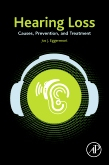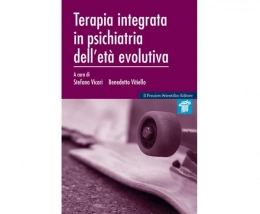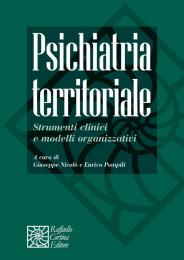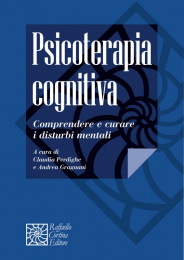Non ci sono recensioni
DA SCONTARE
Features:
- Presents an in-depth overview of hearing loss, causes and prevention, treatments, and future directions in the field
- Written for researchers and clinicians, such as auditory neuroscientists, audiologists, neurologists, speech pathologists, pediatricians, and geriatricians
- Presents the benefits and problems with hearing aids and cochlear implants
- Includes important quality of life issues
Part I: The Basics
Chapter 1. Hearing Basics
- Abstract
- 1.1 Hearing Sensitivity in the Animal Kingdom
- 1.2 The Mammalian Middle Ear
- 1.3 The Mammalian Inner Ear
- 1.4 The Auditory Nerve
- 1.5 Ribbon Synapses
- 1.6 The Central Afferent System
- 1.7 The Efferent System
- 1.8 Sound Localization
- 1.9 Summary
- References
Chapter 2. Brain Plasticity and Perceptual Learning
- Abstract
- 2.1 The External Environment
- 2.2 Learning Paradigms
- 2.3 Perceptual Learning
- 2.4 Auditory Training
- 2.5 AV Training
- 2.6 Music Training
- 2.7 Training by Playing Action Video Games
- 2.8 Summary
- References
Chapter 3. Multisensory Processing
- Abstract
- 3.1 Multimodal Auditory Cortical Areas
- 3.2 AV Interaction in Humans
- 3.3 Auditory-Somatosensory Interaction
- 3.4 Summary
- References
Part II: The Problem
Chapter 4. Hearing Problems
- Abstract
- 4.1 The Various Consequences of Noise Exposure
- 4.2 Sound Localization Problems
- 4.3 The Cocktail Party, Where Identification and Localization Come Together
- 4.4 Other Consequences of Hearing Loss
- 4.5 Neurological Disorders with Hearing Problems
- 4.6 Hearing Disorders Without Hearing Sensitivity Loss
- 4.7 Nonauditory Effects of Hearing Loss
- 4.8 Summary
- References
Chapter 5. Types of Hearing Loss
- Abstract
- 5.1 Site of Lesion Testing
- 5.2 Conductive Hearing Loss
- 5.3 Use of Tympanometry in Detecting Conductive Hearing Loss
- 5.4 Sensorineural Hearing Loss
- 5.5 Loudness Recruitment
- 5.6 Auditory Neuropathy
- 5.7 Vestibular Schwannoma
- 5.8 Ménière’s Disease
- 5.9 Age-Related Hearing Impairment (Presbycusis)
- 5.10 Summary
- References
Part III: The Causes
Chapter 6. Causes of Acquired Hearing Loss
- Abstract
- 6.1 Occupational Noise Exposure in General
- 6.2 Recreational Noise and Music
- 6.3 Animal Research into Effects of Noise Exposure on the Brain
- 6.4 Ototoxicity
- 6.5 Long-Term Effects of Conductive Hearing Loss in Infancy
- 6.6 Vestibular Schwannoma
- 6.7 Ménière’s Disease
- 6.8 Diabetes
- 6.9 Summary
- References
Chapter 7. Epidemiology and Genetics of Hearing Loss and Tinnitus
- Abstract
- 7.1 Epidemiology of Sensorineural Hearing Loss
- 7.2 Epidemiology of Age-Related Hearing Loss
- 7.3 Epidemiology of Tinnitus
- 7.4 Epidemiology of Smoking and Alcohol Consumption
- 7.5 Epidemiology of Diabetes
- 7.6 Epidemiology of Otitis Media
- 7.7 Epidemiology of Auditory Neuropathy Spectrum Disorder
- 7.8 Genetics of Sensorineural Hearing Loss
- 7.9 Genetics of Otosclerosis
- 7.10 Genetics of Auditory Neuropathy
- 7.11 Gene Networks
- 7.12 Hereditary Versus Acquired Hearing Loss
- 7.13 Summary
- References
Chapter 8. Early Diagnosis and Prevention of Hearing Loss
- Abstract
- 8.1 Normal Human Auditory Development
- 8.2 Effects of Early Hearing Loss on Speech Production
- 8.3 Early Detection
- 8.4 Noise Exposure During Adolescence and Young Adulthood
- 8.5 Physical Hearing Protection
- 8.6 Education
- 8.7 Drug Protection Against Noise-Induced Hearing Loss
- 8.8 Summary
- References
Part IV: The Treatments
Chapter 9. Hearing Aids
- Abstract
- 9.1 Effects of Hearing Loss
- 9.2 Acclimatization and Plasticity
- 9.3 Satisfaction and Quality of Life
- 9.4 Types of Hearing Aids
- 9.5 Processing
- 9.6 High-Frequency Hearing Loss, Loudness Recruitment, and Reduced SNR
- 9.7 Hearing Aids and Music Perception
- 9.8 Hearing Aids and Tinnitus
- 9.9 Summary
- References
Chapter 10. Implantable Hearing Aids
- Abstract
- 10.1 Bone Conduction Mechanisms
- 10.2 Bone-Anchored Hearing Aids
- 10.3 Implantable Active Middle Ear Devices
- 10.4 Summary
- References
Chapter 11. Cochlear Implants
- Abstract
- 11.1 Basics of Cochlear Implants
- 11.2 A Little History
- 11.3 Sound Processing Strategies
- 11.4 Temporal Processing With a Cochlear Implant
- 11.5 Effects of Age on Implantation
- 11.6 Cochlear Implants and Music Perception
- 11.7 One-Sided or Bilateral Implantation?
- 11.8 Cochlear Implantation and Tinnitus
- 11.9 Modeling Studies
- 11.10 Summary
- References
Part V: The Future
Chapter 12. Auditory Brainstem and Midbrain Implants
- Abstract
- 12.1 Auditory Brainstem Implants
- 12.2 Auditory Midbrain Implants
- 12.3 Summary
- References
Chapter 13. Repairing and Building New Ears
- Abstract
- 13.1 Gene Therapy for Hereditary Hearing Loss
- 13.2 Regenerating Hair Cells
- 13.3 Birds Can Do It
- 13.4 Trials in Mammals
- 13.5 Outlook
- References
Appendix A. Electrocochleography From the Promontory and via a Cochlear Implant
- A.1 Introduction
- A.2 Methods
- A.3 Receptor Potentials
- A.4 The Compound Action Potential
- A.5 Comparing the CAP and the eCAP
- References




